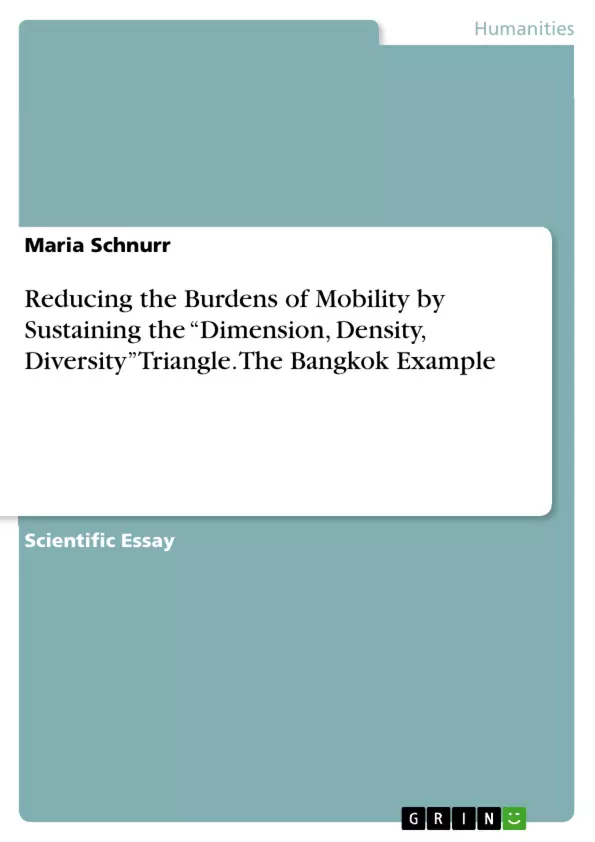Pollution, congestion, and accidents are the most prominent problems associated with urban transport, more specifically with road traffic and motorised vehicles. Urban planning that serves mainly the needs of car travel and prioritises road infrastructure financing is regarded as the main cause of the “urban mobility crisis” prevalent in most of the larger cities. In contrast, successful large cities have eased the burdens of mobility by integrating land use and transportation planning, thus matching urban form with transport systems. They have enhanced the traditional characteristics of cities which “are size, density and diversity.” While the benefits of size (dimension) need to be critically assessed, the benefits of high density and diversity levels are obvious, especially regarding sustainable transport: High densities reduce travel distances, and high diversity means a greater variety of infrastructure and services easily accessible, again reducing travel distances. This paper will transfer these insights to the transportation system of Thailand’s capital city of Bangkok and then develop recommendations for implementation.
Table of Contents
- Introduction
- Sustainable Transportation Planning and the Basic Characteristics of Cities
- Seizing the Opportunities of Density, Dimension and Diversity in Bangkok
- Burdens of Mobility in Bangkok
- Congestion
- Pollution and Smog
- Social Mobility Divide: Accessibility and Inequality
- Why Mobility Burdens in Bangkok are Rising
- Burdens of Mobility in Bangkok
Objectives and Key Themes
This paper examines the challenges of urban mobility in Bangkok, focusing on the city's high congestion, air pollution, and social mobility divide. The author investigates how these problems are exacerbated by the city's rapid growth, expanding middle class, and suburban sprawl. The paper aims to transfer insights from sustainable transportation planning principles to Bangkok's transportation system and develop recommendations for implementation.
- Sustainable Transportation Planning Principles
- Urban Characteristics of Density, Dimension, and Diversity
- Burdens of Mobility in Bangkok
- The Role of Middle Class and Suburban Sprawl
- Potential Solutions for Sustainable Urban Mobility in Bangkok
Chapter Summaries
The first chapter introduces the paper's focus on urban mobility challenges and the "urban mobility crisis" prevalent in many cities. It highlights the importance of integrating land use and transportation planning and the benefits of high density and diversity levels in promoting sustainable transport. The second chapter delves into sustainable transportation planning principles, outlining key concepts like minimizing travel distances, eliminating traffic-inducing incentives, and prioritizing equitable and fair transport systems. It also discusses the significance of multimodality and demand management in achieving sustainable urban mobility.
The third chapter shifts the focus to Bangkok, examining the city's high congestion levels and the burdens of mobility it faces. It explores the various factors contributing to Bangkok's mobility problems, including increasing car ownership, population growth, the rise of the middle class, suburbanization, and sprawl.
Keywords
This paper examines key concepts related to sustainable urban mobility, focusing on urban transportation planning, density, dimension, diversity, congestion, air pollution, social mobility divide, Bangkok, Thailand, middle class, suburbanization, and sprawl. The paper also explores the interplay between these factors and their impact on urban development.
- Quote paper
- Dr. Maria Schnurr (Author), 2009, Reducing the Burdens of Mobility by Sustaining the “Dimension, Density, Diversity” Triangle. The Bangkok Example, Munich, GRIN Verlag, https://www.grin.com/document/292974



